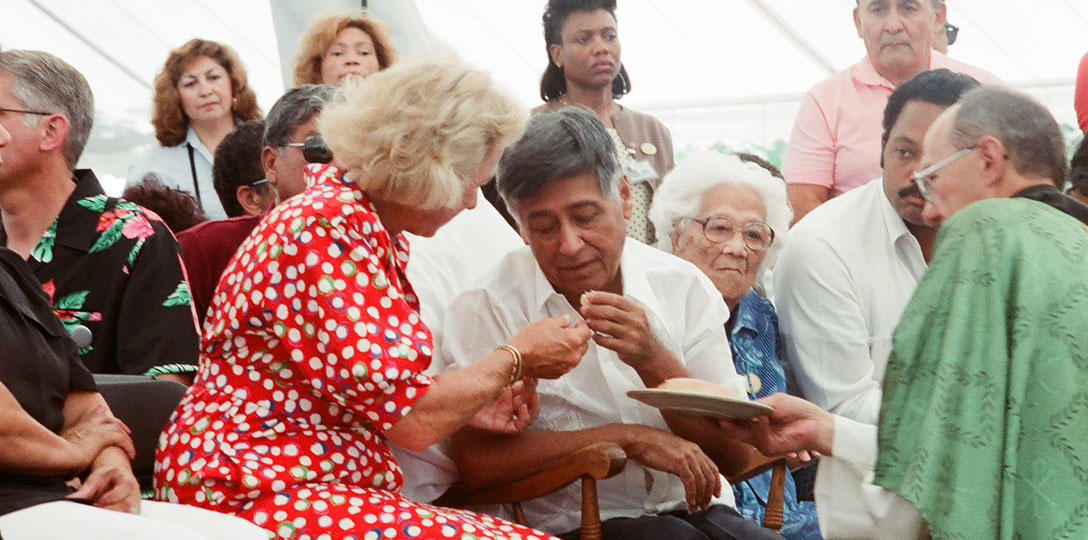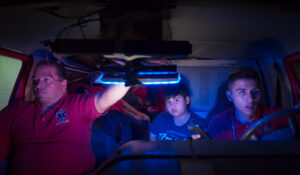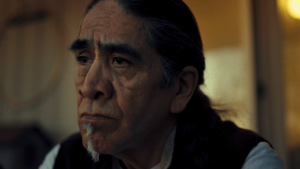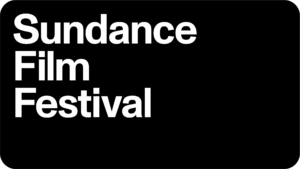Cesar’s Last Fast
Matt Haber
Before you decide to embark on making a documentary — a process that often takes years, drains your savings, and tries the patience of your friends and family — ask yourself this simple not-so-simple question: Does your film want to get made?
That’s one of the questions filmmaker and Stanford professor Jan Krawitz urged the crowd of would-be filmmakers to consider at the Sundance Institute/Knight Foundation Documentary Workshop at the Hammer Theatre in San Jose, CA, this past August.
Before you shoot even a minute of film, consider, Krowitz suggested, “Does this want to be a film? Not an article? A dance? A painting?”
Krowitz was onstage having a conversation with Richard Ray Perez, the Sundance Institute’s Director of Creative Partnerships, Documentary Film Program before a screening of Perez’s 2014 film Cesar’s Last Fast. The hundred or so guests at the Hammer listened in and asked questions as Perez explained how he discovered that Last Fast, the dramatic story of Latino labor rights activist Cesar Chavez’s dramatic final act of consciousness-raising, was, most definitely, a film.
Already a documentary producer and director of photography (Unprecedented: The 2000 Presidential Election; Outfoxed: Rupert Murdoch’s War on Journalism, among others) Perez was approached by filmmaker Lorena Parlee, who possessed a trove of VHS tapes depicting Chavez’s 36-day hunger strike in 1988. Parlee passed away in 2006, but she left instructions for her family to share the tapes (about 80 hours in all) with Perez, whom she’d spoken to about collaborating on a film.
Popping in one of Parlee’s tapes, Perez was blown away. “It was so emotional, so dramatic,” he recalled. “I thought, That’s a film!”
Combining those tapes with archival footage and original interviews with Chavez’s family, fellow organizers, and activists like Martin Sheen, Perez created a film about “spiritual commitment as embodied by [Chavez’s] fast.”
Perez weighed a variation of Krowitz’s original question — Does this want to be a film? — before he started. He asked himself, “Has this story been told before?” In a sense, part of it had, in Rick Tejada-Flores and Ray Telles’ 1997 doc 1997 doc The Fight in the Fields, but Perez knew he had something special in Parlee’s intimate, painful footage. “Is there enough conflict here that justifies making a film about it?”
“Do I need to retell it? Or can I tell it differently?”
Perez’s own life offered an answer. He’s the proud son of a onetime migrant farm worker and he got visibly choked up onstage talking about what he calls the film’s “emotional core,” footage he found of Chavez taking his first bite of bread after 36 days. “Everything blossomed from that,” he said.
Perez also sees echoes of Chavez’s grassroots struggle in the current political climate, something that gives the movie a sense of urgency and makes it more than a period piece or, worse, “a video textbook.”
“While it’s a past tense story,” Perez said, “I tried to make it as present tense as possible.”
In a one-on-one interview following the screening, Perez elaborated some of his points for would-be documentary makers. “First of all, your story needs to be told if it’s never been told before,” he said.
Do your best to find the emotional core, a moment or line that will reach out and touch your audience. “What’s universal? What is the emotional core of your film? What is it about and how does it go from there?”
Most of all, Perez counsels filmmakers to get good feedback from people they trust. “Engage with fellow thinkers, filmmakers, and other artists,” he said. “It becomes this evolving process.”




